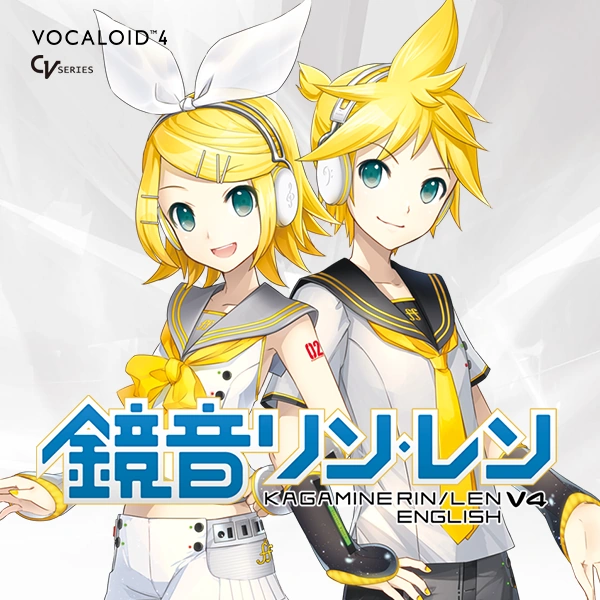Visit Singing synth software VOCALOID5 is available now. Win / Mac VST / AU compatible - 4 voicebanks(2 english &2 japanese) - ov. By drawing on the skills of native speakers with U.S. Backgrounds, the software creates authentic and natural American English pronunciation. Usually in VOCALOID, the singing voices use pronunciation and symbols close to British English, but with this new product users can create voices that sing in natural American English by setting the CYBER SONGMAN dedicated user dictionary file that comes.
| Developer(s) | Yamaha Corporation |
|---|---|
| Initial release | January 15, 2004 |
| Stable release | |
| Operating system | Windows XP / Vista / 7 Apple iOS (iVocaloid, Japan Only) |
| Available in | English, Japanese, Spanish, Korean, Chinese |
| Type | Musical Synthesizer Application |
| License | Proprietary |
| Website | vocaloid.com |
Vocaloid is a music software that's used to make vocals for music. It was created by Yamaha, a company that sells musical instruments, as well as other products. The user can type in lyrics and a melody and it will synthesize singing. Voicebanks for Vocaloid are made by recording samples of singers.[1]

Vocaloid was developed partially through a research project led by Kenmochi Hideki. The people involved in this project later created the company Voctro Labs. Vocaloid was originally not supposed to be a commercial product, but with the help of Yamaha, became the program we know today.
Vocaloid originally only had an English version available, with two English voicebanks, Leon and Lola, being released for it. This changed later on with the release of Kaito and Meiko, which were both Japanese voicebanks.
Vocaloid is meant both for professional and amateur music makers, since Vocaloid is easy to use, so the only limit is the user's skill. Music groups like Livetune and Supercell have made music using Vocaloid voicebanks.
Technology[change | change source]
Vocaloid works by taking samples of singers and separating them into parts. These parts are used to form words. Vocaloid voices can be made to sound more realistic by using vibrato and changing things like how breathy a voice sounds.
History[change | change source]
Vocaloid[change | change source]
Yamaha started working on Vocaloid in 2000. They announced it at a German music festival. Vocaloid was originally nicknamed 'Daisy' as a reference to the song 'Daisy Bell', but eventually they got rid of that name and decided to use 'Vocaloid' instead.
Vocaloid 2[change | change source]
Vocaloid 2 was announced in 2007. The way vocals were synthesized was changed, and so was the way the program looked.
Free English Vocaloid Voicebanks
Vocaloid 3[change | change source]
Vocaloid 3 was released on October 21st, 2011. A lot of companies that made voicebanks for Vocaloid 2 upgraded their voicebanks to Vocaloid 3 because it sounded better.
Vocaloid 4[change | change source]
Vocaloid 4 was released in 2015, and added a feature which let voicebanks made specifically for Vocaloid 4 sound like they were growling.
Vocaloid 5[change | change source]
Vocaloid English Phonemes

Vocaloid 5 was released in 2018, with an overhauled user interface and substantial engine improvements.

References[change | change source]
- ↑'Could I Get That Song in Elvis, Please?'. The New York Times. 23 November 2003. Retrieved 30 December 2016.
Other websites[change | change source]
Vocaloid English Voicebank Download
- Official website(in Japanese)
- Official website (in English)
Vocaloid Com English Movies
Vocaloid Voicebanks Free Download
| Symbol | Example (orthographic) | Example (phonetic) | Comments |
| a | padre | [p a][D r e] | |
| e | enero | [e][n e][r o] | |
| i | finca | [f i n][k a] | |
| o | foco | [f o][k o] | |
| u | unidos | [u][n i][D o s] | |
| I | aire rey hoy muy | [a I][r e] [rr e I] [o I] [m u I] | forms diphthong [a I] forms diphthong [e I] forms diphthong [o I] forms diphthong [u I] |
| U | pausa neutro bou | [p a U][s a] [n e U][t r o] [b o U] | forms diphthong [a U] forms diphthong [e U] forms diphthong [o U] |
| j | hacia tierra piojo viuda | [a][T j a] [t j e][rr a] [p j o][x o] [b j u][D a] | palatal approximant forms diphthong [j a] forms diphthong [j e] forms diphthong [j o] forms diphthong [j u] |
| w | cuadro fuego cuota fuimos | [k w a][D r o] [f w e][G o] [k w o][t a] [f w i][m o s] | forms diphthong [w a] forms diphthong [w e] forms diphthong [w o] forms diphthong [w i] |
| p | perro | [p e][rr o] | |
| t | tuyo | [t u][j o] | |
| k | carro | [k a][rr o] | |
| b | vino | [b i][n o] | occlusive |
| d | donde | [d o n][d e] | occlusive |
| g | gata | [g a][t a] | occlusive |
| B | cabra | [k a][B r a] | approximant |
| D | nada | [n a][D a] | approximant |
| G | luego | [l w e][G o] | approximant |
| tS | chico | [tS i][k o] | |
| f | fácil | [f a][T i l] | |
| T | pez | [p e T] | |
| s | sala | [s a][l a] | |
| x | jamón | [x a][m o n] | |
| m | madre | [m a][D r e] | |
| n | nada | [n a][D a] | |
| J | caña | [k a][J a] | |
| l | hablar | [a][B l a r] | |
| r | pero | [p e][r o] | sometimes written as [4] |
| rr | perro | [p e][rr o] | sometimes written as [r] |
| L | millón | [m i][L o n] | palatal lateral approximant, in some accents pronounced [j] (see: yeísmo) |
| j | sayo | [s a][j o] | voiced palatal fricative, sometimes pronounced [j] |